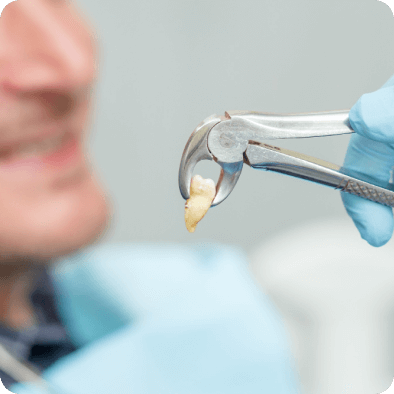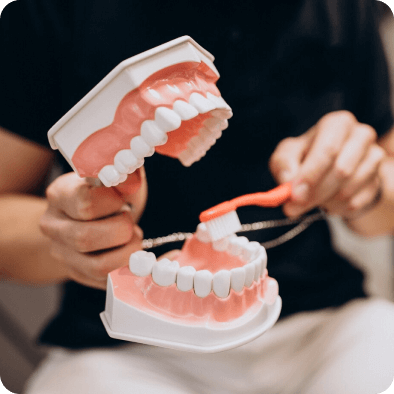- Greater confidence
- Stability when eating
- Bone and gum preservation
- Better dental hygiene
- Superior aesthetics
- Nutritional benefits
Implant Retained Dentures in Fullerton, CA
Implant-Supported Dentures
Replacing missing teeth with implant-supported dentures
Generally, when you lose a tooth, it’s best for your oral health to have it replaced. Missing teeth can change your bite as well as your ability to speak and chew. Their loss can increase the strain on your remaining teeth and can cause jaw muscle pain and headaches. And of course, the loss of a tooth can affect your appearance. The following information covers replacing missing teeth with implant-supported dentures.
Although many patients have no problems wearing upper dentures, some find it difficult to wear and eat with lower dentures. Several implant-supported replacement options are available if you are missing all of your lower teeth.
What happens if I am missing all my lower teeth?
Denture fixation ball
One option is to have two implants in your lower jaw and a denture made that fits over those implants. This option allows your dentures to be more stable when chewing than without implants. However, your lower dentures will continue to move, and pain points will appear if food particles, particularly seeds, become trapped beneath them. As with all removable replacement teeth, you will need periodic appointments to adjust your dentures.
Denture fixation bar
Another option is to place four to six implants, depending on the size and shape of your jawbone, in your lower jaw. Once healing is complete, the implants are connected to a custom-made fixation bar. Your denture will be made with special internal retention clips that connect to the fixation bar, allowing the denture to stay firmly in place. This is called an “overdenture.” The advantage of this option is that it is much more stable than the first option and allows very little movement of the denture. Your denture remains removable for easy cleaning and maintenance.
Screw-held dentures
A third option requires the placement of five or more implants in your jawbone and the placement of a permanent denture. Your denture is held in place by screws or clasps that secure it to support posts or bars. It does not touch the gum tissue, allowing you to clean under the denture without removing it. This denture replaces all your missing lower teeth and will not be removed except during maintenance visits. Although cleaning under the denture requires more time and skill, many patients who want permanent dentures prefer this option.
What happens if I am missing all my upper teeth?
A similar range of treatment options is also available for your upper jaw. However, since the bone is not as hard as that of the lower jaw, people often require more implants to support their new replacement teeth. Depending on the number of implants placed, it may be possible to eliminate the need to cover your palate with a full denture. This option allows you to fully taste your food and gives you a better sense of its temperature. Your teeth will feel more natural. You will retain removable dentures, making it easier to clean them and the retainer bar.
Benefits of Implants
Dentistry with all the bells and whistles






